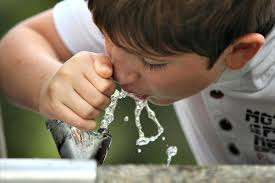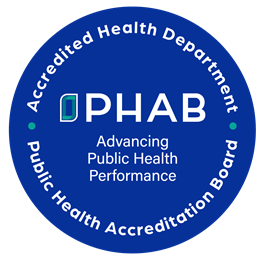For Schools Sampling Drinking Water for Lead

It is important to read the document thoroughly and to adhere to this guidance closesly in order to achieve accurate and reliable analytical results. The Health Department also recommends that schools consult one of the laboratories listed here for additional assistance.
Health Department staff are available if you have questions about sampling water or health concerns related to lead by calling 716-701-3391.
Guidance Documents
- 3Ts for Reducing Lead in Drinking Water in Schools. Revised Technical Guidance. US-EPA816-B-05-008. 104 pages. (PDF, 1.81MB)- STRONGLY RECOMMENDED
- Drinking Water Best Management Practices For Schools and Child Care Facilities Served by Municipal Water Systems. Drinking water Best Management Plan. US-EPA 816-B-13-002. 16 pages (PDF, 1.32MB)
- National Sanitation Foundation Website at www.nsf.org
Frequently Asked Questions Related to Potable Water and Lead
How does lead occur in drinking water?
Lead seldom occurs naturally in water supplies like rivers and lakes. Lead enters drinking water primarily as a result of the corrosion, or wearing away, of materials containing lead in the water distribution system and household or building plumbing. These materials include lead-based solder used to join copper pipe, brass and chrome-plated brass faucets, and in some cases, pipes made of lead that connect houses and buildings to water mains. In 1986, Congress banned the use of lead solder containing greater than 0.2% lead, and restricted the lead content of faucets, pipes and other plumbing materials to 8.0%. Older construction may still have plumbing that has the potential to contribute lead to drinking water. Prior to 2014 the allowed end-use brass fixtures, such as faucets, with up to 8% lead to be labeled as "lead free", after 2014 this limit was lowered to a weighted average of 0.25%. Visit the National Sanitation Foundation website at www.nsf.org to learn more about lead-containing plumbing fixtures.
How do I learn about the quality of the drinking water supplied to my property?
Public water systems are required to provide their users with an Annual Water Quality Report (AWQR). If your water is supplied by a municipal supplier, you can contact them for this report. Lead and copper water quality results for the most recent sampling conducted in 2015 can be found in this report. The AWQR for various municipal water suppliers in Cattaraugus County can be found at the following web addresses:
Municipal water suppliers in Cattaraugus County that are not available on-line, but are available by calling the Village or Town:
Village of Franklinville
Town of Hinsdale
Town of Randolph
If the cause of elevated lead levels is often fixtures, how do I have the water tested at my facility/house?
Brass faucets, fittings, and valves, even including some advertised as "lead-free", may contribute to lead in drinking water. Visit the National Sanitation Foundation web site at www.nsf.org to learn more about lead-containing plumbing fixtures.
If you choose to test the water at your home, contact one of the laboratories on the list posted on this website. They will provide information, sampling instrutions and containers for proper testing. You may also call the Cattaraugus County Health Department for more information on testing at 716-701-3391.
How can I reduce potential exposure to lead that may be in the drinking water if I choose not to have the water tested in my facility/home?
Do not cook with or drink water from the hot water tap; lead dissolves more easily into hot water. Do not use water from the hot water tap to make baby formula. Boiling water will not reduce lead concentration. If your cold water hasn't been used for several hours, before using it for drinking or cooking run the water for 15-30 seconds or until it becomes cold or reaches a steady temperature. This reduces the concentration of any potential lead-containing water from the pipes.
Remove loose lead solder and debris from the plumbing by removing the faucet strainers from all taps and running the water for three to five minutes. Thereafter, periodically remove the strainers and flush out any debris that has accumulated. Replace the strainers and aerators after flushing.
Is there a safe level of lead?
The Centers for Disease Control and Prevention (CDC) recommends that public health actions be initiated when the level of lead in a child's blood is 5 micrograms per deciliter (ug/dl) or more.
It is important to recognize all the ways a child can be exposed to lead. Children can be exposed to lead in paint, dust, soil, air, and food, as well as by drinking water. If the level of lead in a child's blood is at or above the CDC action level of 5 micrograms per deciliter, it may be due to lead exposures from a combination of sources. EPA estimates that drinking water can make up 20 percent or more of a person's total exposure to lead. Infants who consume mostly mixed formula can receive 40 percent to 60 percent of their exposure to lead from drinking water. Additional information on lead prevention can be found at: Lead Poisoning Prevention


